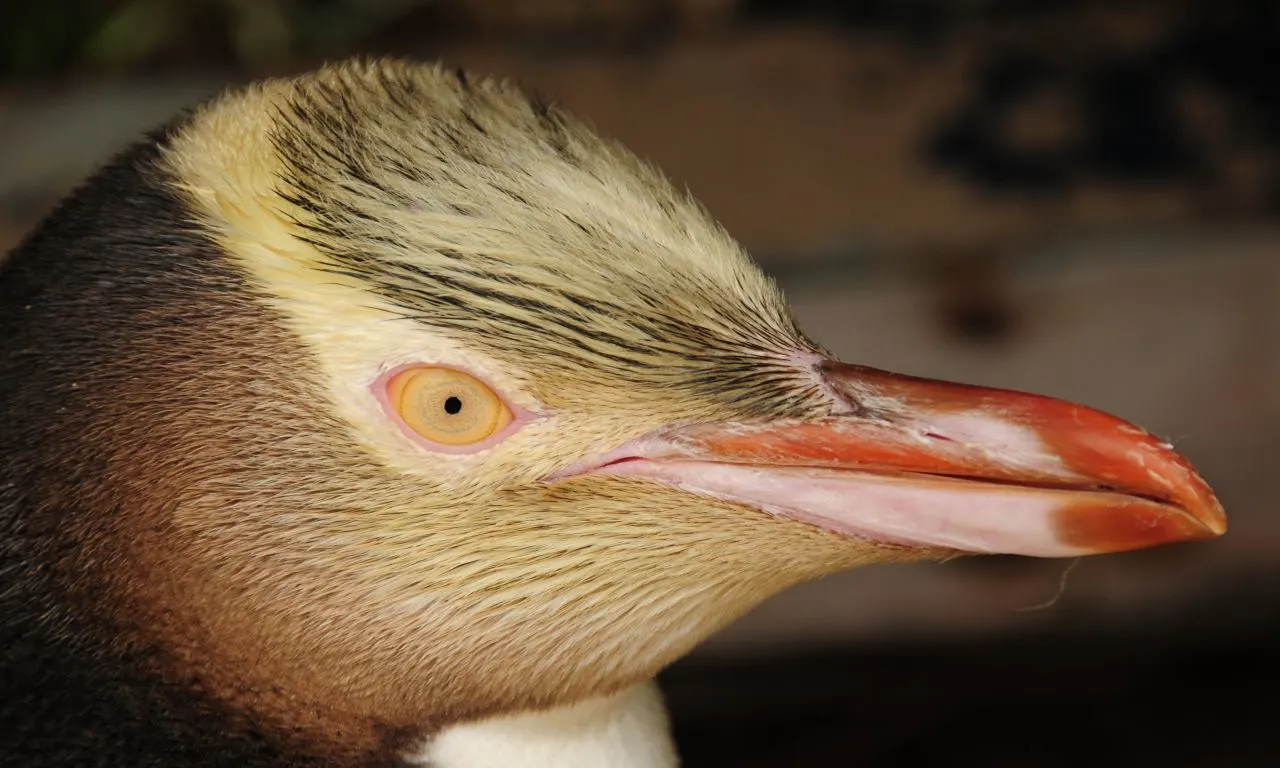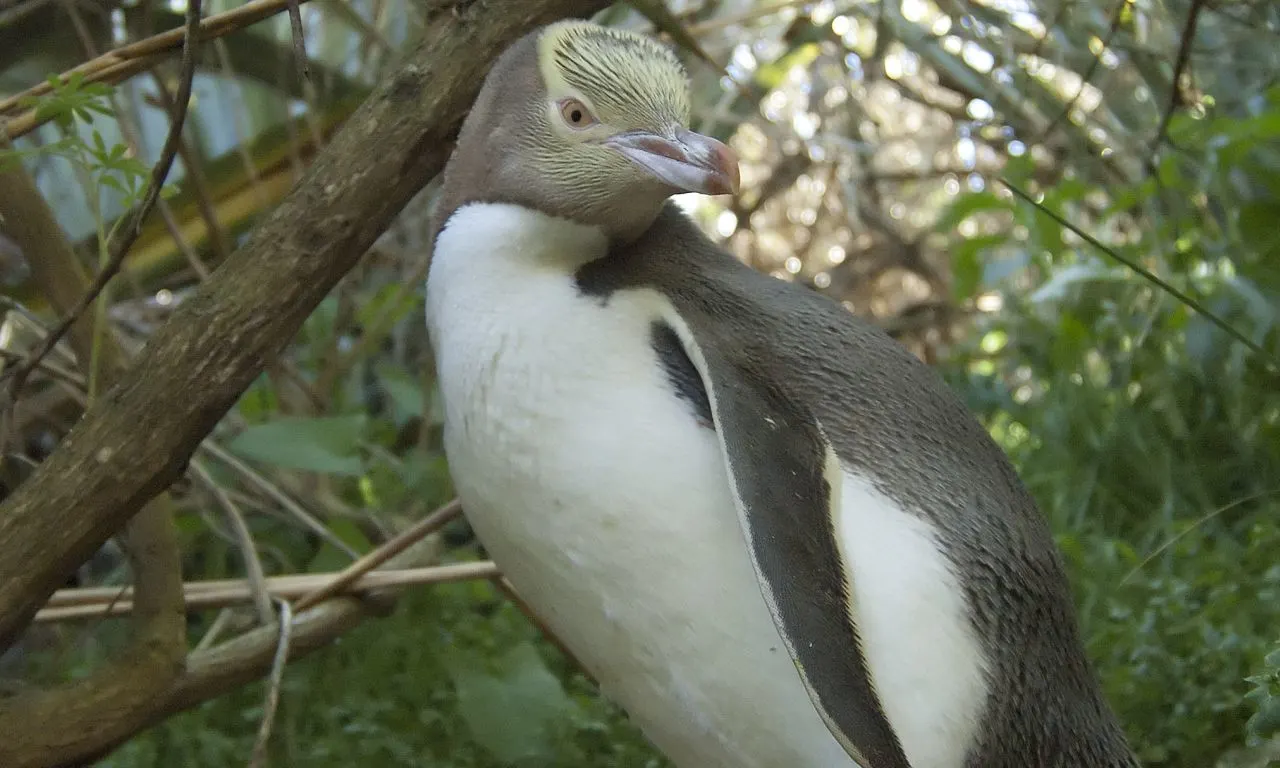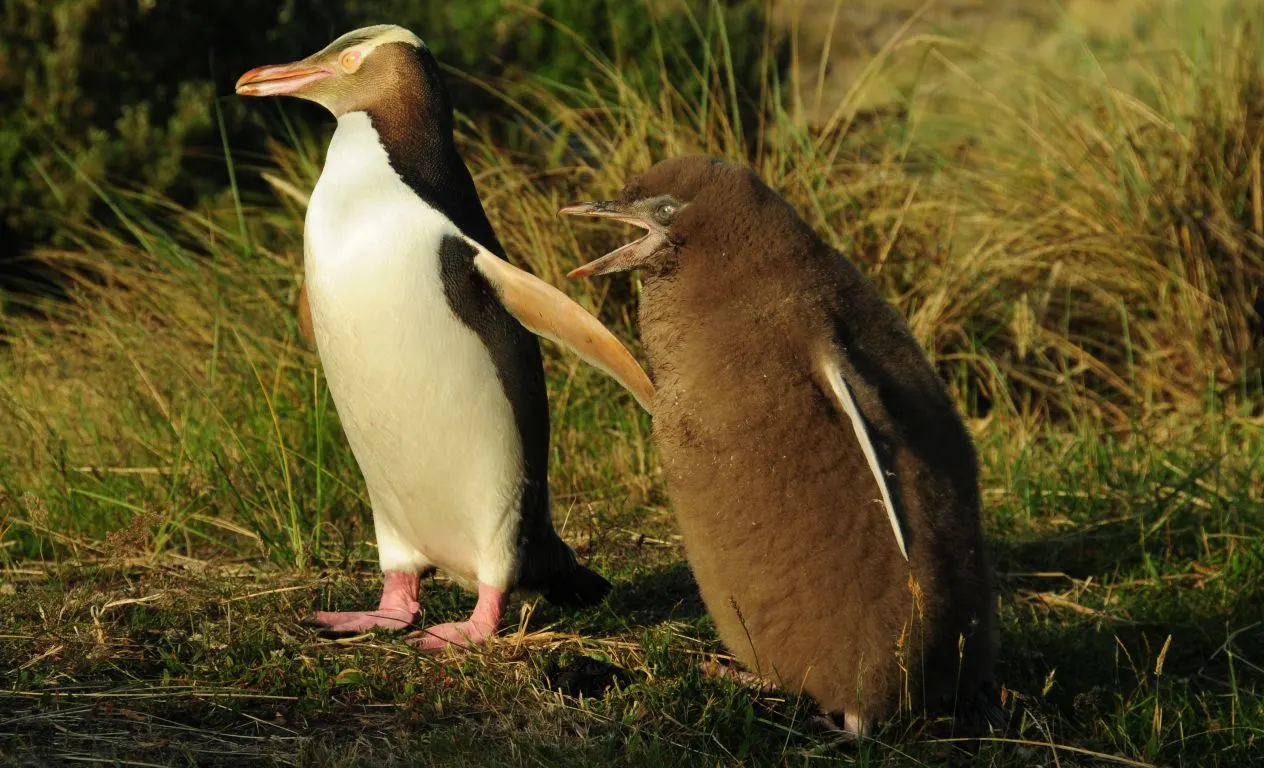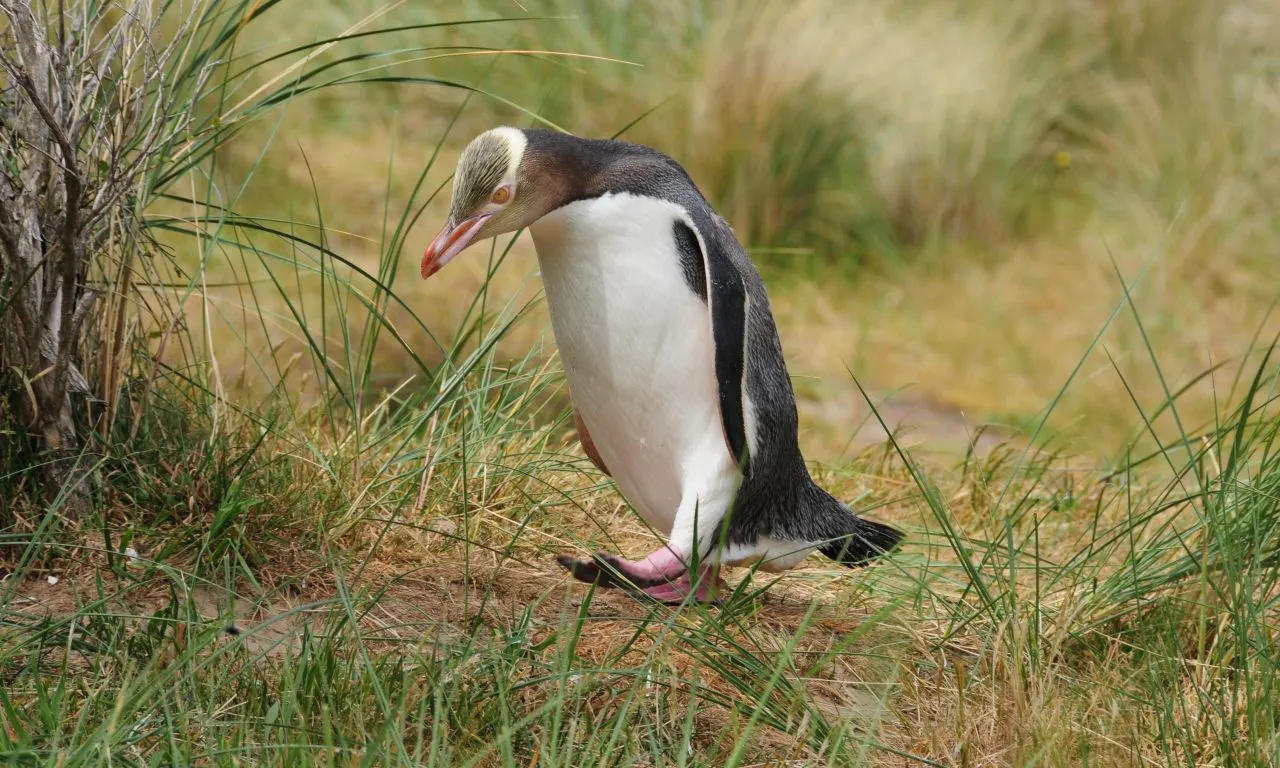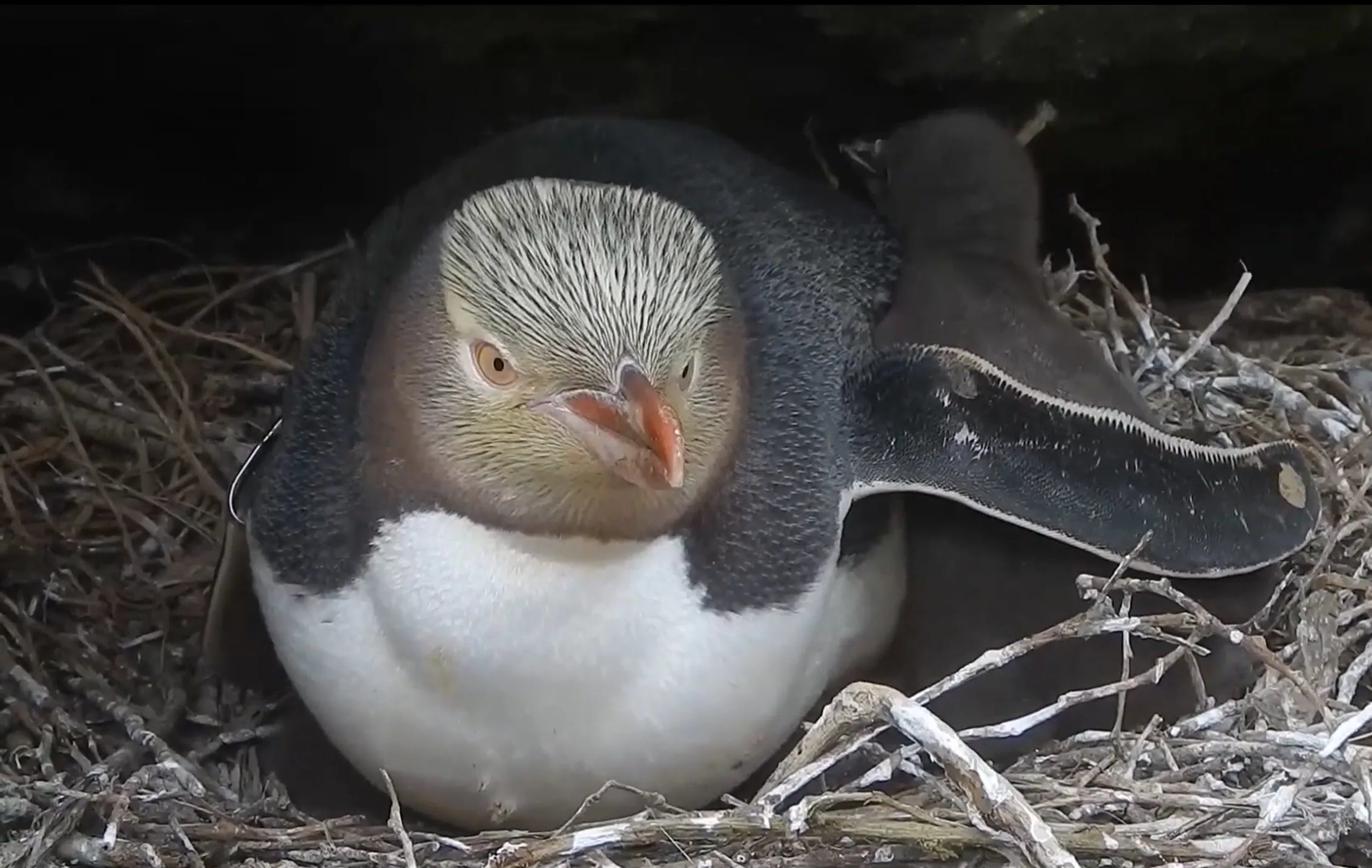Yellow-eyed Penguin - Megadyptes antipodes
- DESCRIPTION
- Tall and heavy penguin (56-78 cm, 4.2 to 8.5 kg), with a pale yellow band of feathers across the nape and around the eyes. Forecrown, chin and cheeks black-flecked yellow, sides of the head and foreneck light fawn-brown, back and tail slate blue; ventral part and underside of the flipers, white. Redish long bill. Yellow eyes, the feet pale to deeper pink dorsally and black-brown ventrally. Juveniles lack the pale yellow band and have a paler eye and paler dorsal head.
- DISTRIBUTION
-
New Zealand: South-east coast of South Island, Stewart Island and adjacent
island, Aukland and Campbell Islands.
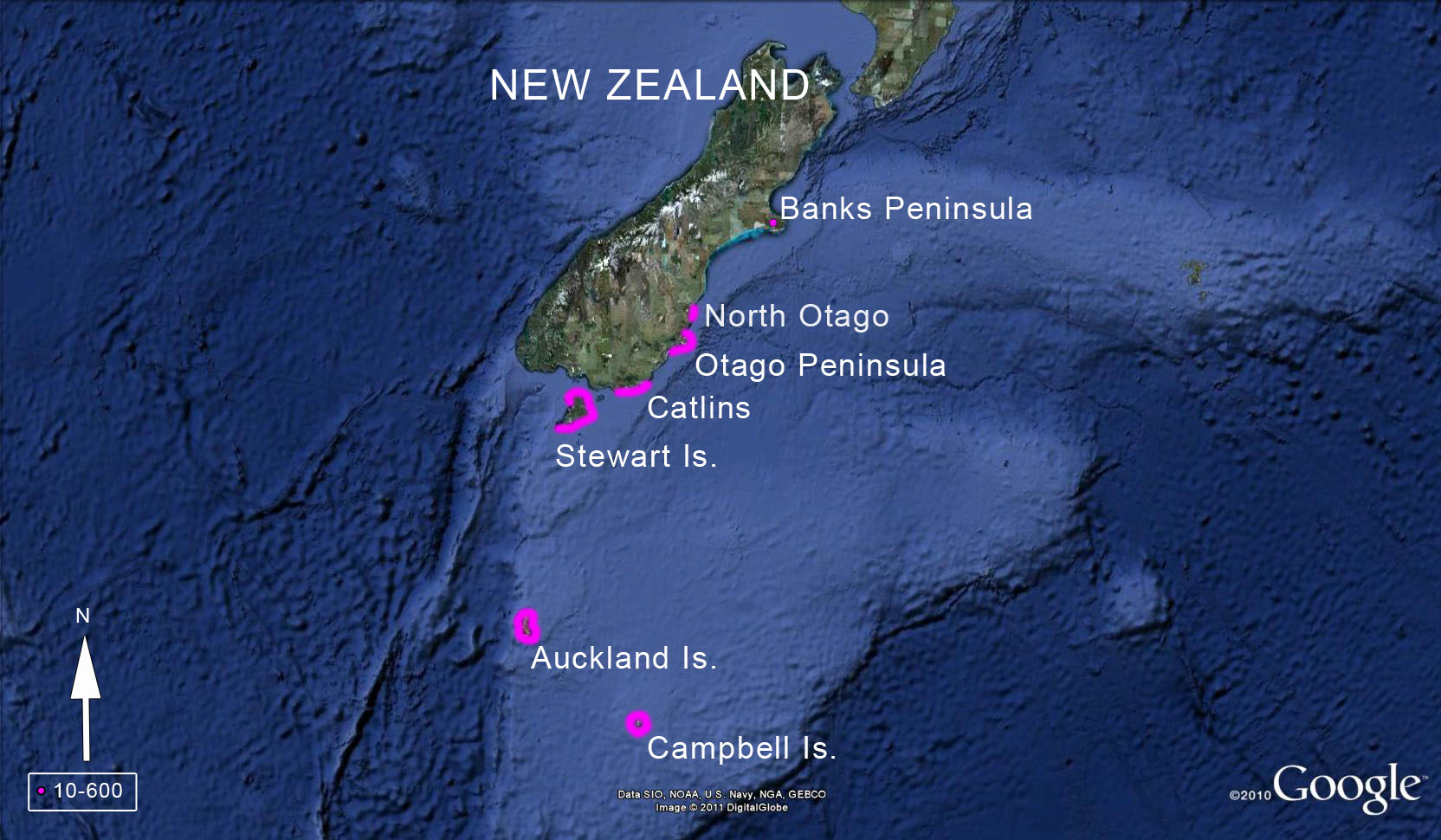
- HABITAT
- Marine, nests in coastal areas with dense vegetation, in slopes and cliffs. Forage in shallow coastal waters. Nests are sufficiently spaced among dense vegetation to be visually isolated.
- BREEDING BIOLOGY
- Sexual maturity at 2-3years old in females, males most at 3 years old. Nest occupation starts at July-August. Two eggs layed in September, incubation is made by both sexes during 39-51 days. First down dark brown, second pale brown. Not form crèches. Fledging at about 106 days.
- FEEDING
- Mid-shelf feeders, 2-25 km offshore. Prey species are pelagic and demersal in habit, including mostly fishes like Sprattus antipodum, Pseudophychis bachus, Hemerocoetes spp., Auchenoceros punctatus, Argentina elongata and Parapercis colias, some cephalopods, and crustaceans.
- REPRODUCTIVE POPULATION
- 1,700 pairs.
- CONSERVATION STATUS AND THREATS
- “Endangered (EN)” (IUCN Red List 2018) on the basis of being confined to a small range when breeding, its forest/scrub habitat decline in quality, and its populations undergone extreme fluctuations in numbers. Main threats are the habitat destruction and fragmentation, disturbance, and introduced predators.
- SOURCE
- Source: Seddon, P.J., Ellenberg, U., and van Heezik, Y. 2013. Yellow-eyed penguin (Megadyptes antipodes). In PENGUINS: NATURAL HISTORY AND CONSERVATION (García Borboroglu, P.G. and Boersma P.D. eds.) University of Washington Press, Seattle U.S.A. 328 pp.
